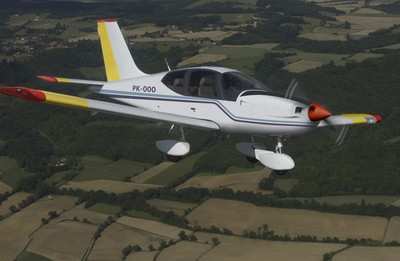Probable Cause Report Issued By NTSB In Shirley, NY Accident
The probable cause report issued by the NTSB in an accident which fatally injured the pilot of a Socata TB-10 on August 19, 2012 indicates that the pilot flew the airplane knowing it had mechanical issues.

According to the report, the accident flight was a pre-purchase demonstration of the accident airplane. The buyer intended to examine and photograph the maintenance records then fly the airplane around the airport traffic pattern with the owner. However, the owner insisted that they fly the airplane before reviewing the maintenance records. Upon starting the airplane, the owner announced that he had just been informed by the mechanic of the airplane’s inoperative tachometer but continued to taxi to the runway.
Witnesses who observed the airplane’s departure described the takeoff roll as “slow” and “anemic” and stated that the airplane used almost the entire length of the runway to become airborne. The airplane climbed slowly to treetop height in a nose-high attitude and disappeared from view. Moments later, a large smoke plume appeared out of the trees a short distance beyond the airport boundary.
A witness who was standing on his back porch facing northeast, about 1.5 miles from the airport, said the airplane appeared above the trees at the back border of his property, flying directly toward him, and that the sound of the engine was "really loud." The airplane descended over his backyard and below the height of his one-story house in a 30-degree left bank. The airplane then pitched up, climbed over the house, and struck a tree and a construction dumpster in front of the house, where it burst into flames.

The mechanic stated that the whereabouts of the maintenance records were unknown, but he provided a handwritten list of discrepancies he found and work he performed on the accident airplane, including 3 hours of disassembling and cleaning of the carburetor.
Examination of the wreckage revealed that the mixture control cable was disconnected from the carburetor mixture control arm. The cable displayed a light coating of soot, with no damage or fraying of the cable. The cable grip hardware on the mixture control arm was also undamaged, and the cable grip hole was completely open and unobstructed by the cable grip hardware, indicating that the cable had been removed from the arm and had not been reattached before the flight.
Although the owner and mechanic had represented the airplane to the buyer as airworthy with a completed annual inspection, they knew this was not the case, as the tachometer was inoperative; further, during a test flight 3 days before the accident, the engine would not produce full power. The pilot complained of the lack of engine power to the mechanic, but the mechanic stated he did nothing to troubleshoot the discrepancy because of the inoperative tachometer and further stated that he had not “signed off” the annual inspection in the maintenance records.
The NTSB determined the probable cause of this accident to be the pilot/owner's operation of the airplane with known deficiencies, and the mechanic's failure to reattach the mixture control cable to the mixture control arm following maintenance of the carburetor.
(Socata TB-10 pictured in file photo. Not accident airplane)
 Aero-News: Quote of the Day (05.09.24)
Aero-News: Quote of the Day (05.09.24) ANN's Daily Aero-Term (05.09.24): Hold Procedure
ANN's Daily Aero-Term (05.09.24): Hold Procedure ANN's Daily Aero-Linx (05.09.24)
ANN's Daily Aero-Linx (05.09.24) Airborne 05.03.24: Advanced Powerplant Solutions, PRA Runway Woes, Drone Racing
Airborne 05.03.24: Advanced Powerplant Solutions, PRA Runway Woes, Drone Racing Airborne-NextGen 05.07.24: AI-Piloted F-16, AgEagle, 1st 2 WorldView Sats
Airborne-NextGen 05.07.24: AI-Piloted F-16, AgEagle, 1st 2 WorldView Sats




